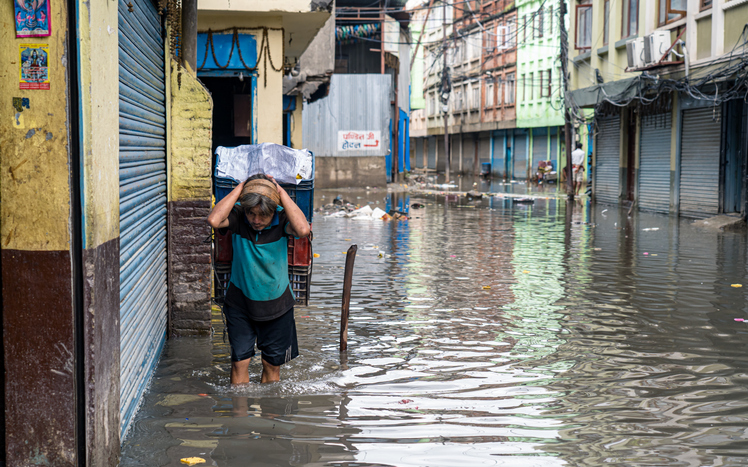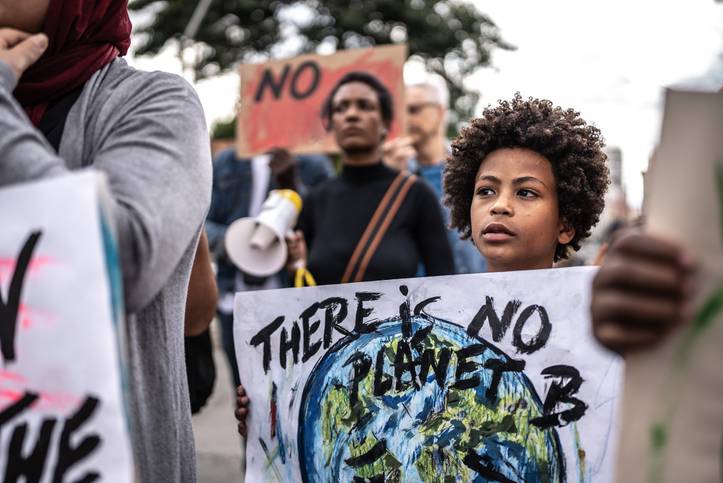How do social networks help communities that have become vulnerable to environmental damage caused by climate change? This column draws on evidence from rural India, to show households making more investments in family and caste-based relationships, and with local government officials. Such investments are associated with higher levels of reported collaboration, adoption of irrigation technology, increasing access to credit, and lower levels of reported conflict.
How does investment in social networks help communities that have become vulnerable to environmental damage caused by climate change? My research finds evidence that households in parts of rural India with lower than average precipitation levels tend to make greater investments in family and caste-based relationships. They also make connections with senior government officials and other authorities in ‘vertical networks’.
These results reflect the relative importance of network relationships in times of environmental crisis. Furthermore, they have important implications for climate adaptation policies, highlighting the importance of strengthening family and caste-based institutions, as well as linkages with local government bodies. Indeed, these institutions may be more effective in reaching the most vulnerable than traditional NGOs and development institutions.
Many researchers have examined how extreme climate events can be mitigated through collective action and supportive social networks. For example, studies highlight the importance of social capital and collective action in coping with extreme weather events, such as heatwaves, tsunamis, and hurricanes. As well as the merits of adopting community-based approaches in managing shared natural resources, such as forests, fish stocks, and coastal resources.
New and emerging research has begun to focus on the ways that households adapt to changes in long-term climate patterns – for example, by using better planting and irrigation techniques or growing more climate-resistant crops. More often than not, these decisions are informed by past climate events or expectations of future climate patterns, rather than negative climate shocks occurring in a single year.
Unfortunately, very little is known about the extent to which increased unpredictability in climate patterns may influence households’ decisions about establishing and maintaining specific social network relationships. Indeed, while social network relationships can be beneficial for stabilizing income flows and providing community support, social networks are heterogeneous in nature, at times extending beyond family or ethnic relationships (bridging networks) and, in other instances, to people who may have tremendous influence or power (linking networks).
It is important to understand which social networks become most important to communities in the face of negative climate events – and the types of support that these relationships offer.
The case of India is particularly interesting for two reasons. First, more than 70% of rural households rely on some form of agriculture for earnings or to supplement their dietary needs, having little or no use of irrigation technologies. Making such farming communities particularly vulnerable to climate events.
Second, changes continue to be observed in India’s long-term climate patterns, specifically fluctuations in inter-decadal rainfall patterns across districts (see Figure 1). In other words, for some locations in India, long-term rainfall patterns fluctuate between periods of dry spells followed by wet spells, followed by dry spells. These locations are considered to have greater rainfall variability and, as such, higher climate risks.
My research makes use of spatial variation in long-term rainfall patterns across districts in India (see Figure 2) to identify possible differences in social network investments among households living in regions with greater variability in climate patterns, relative to households that live in locations where rainfall patterns are much more stable. Measures of investments in social network relationships are obtained from the nationwide Indian Human Development Survey, which captures information on households’ characteristics inclusive of social network relationships over two waves in 2004/05 and 2011/12.


The analysis shows that households living in districts that experience higher average long-term negative rainfall shocks tend to make greater investments in family and caste-based networks, and vertical networks. Interestingly, there is little or no impact of long-term changes in temperature levels on social capital investments a result that reflects the relative difficulty for rural communities of adapting to changes in temperature levels over the long term.
Investments in family-based and linked networks are also associated with higher levels of reported collaboration, adoption of irrigation technology, increasing access to credit, and lower levels of reported conflict.
The study also explores the relationship between caste status and access to social networks. The results show that wealth measured in terms of average village income, as well as reported land ownership among households, are stronger predictors of access to vertical networks than caste status (being a member of a ‘Schedule Caste and Scheduled Tribe’ or a ‘High Caste’ group). This may reflect an incremental and positive change in caste relationships in rural India.
Testing the robustness of these results can be done by leveraging the expansion of large dam projects throughout India. My research examines the impact of new large dam construction after the first survey wave of 2005 among rain-affected communities.
For those communities that benefit from a more reliable water supply, there are much lower investments in family and caste networks. This result, mirrors the findings of research that show a decline in households’ networks with increasing access to microcredit schemes among villages in rural India.

Figure 3. – New Dams constructed after 2005, All India
Collectively, these results highlight the importance of social network relationships, specifically family, caste and vertical network relationships, in supporting adaptation to increasing climate risks. They highlight the importance of policies that strengthen informal family or caste-based organizations, as well as linkages with local government organizations, particularly in times of heightened climate risks.






